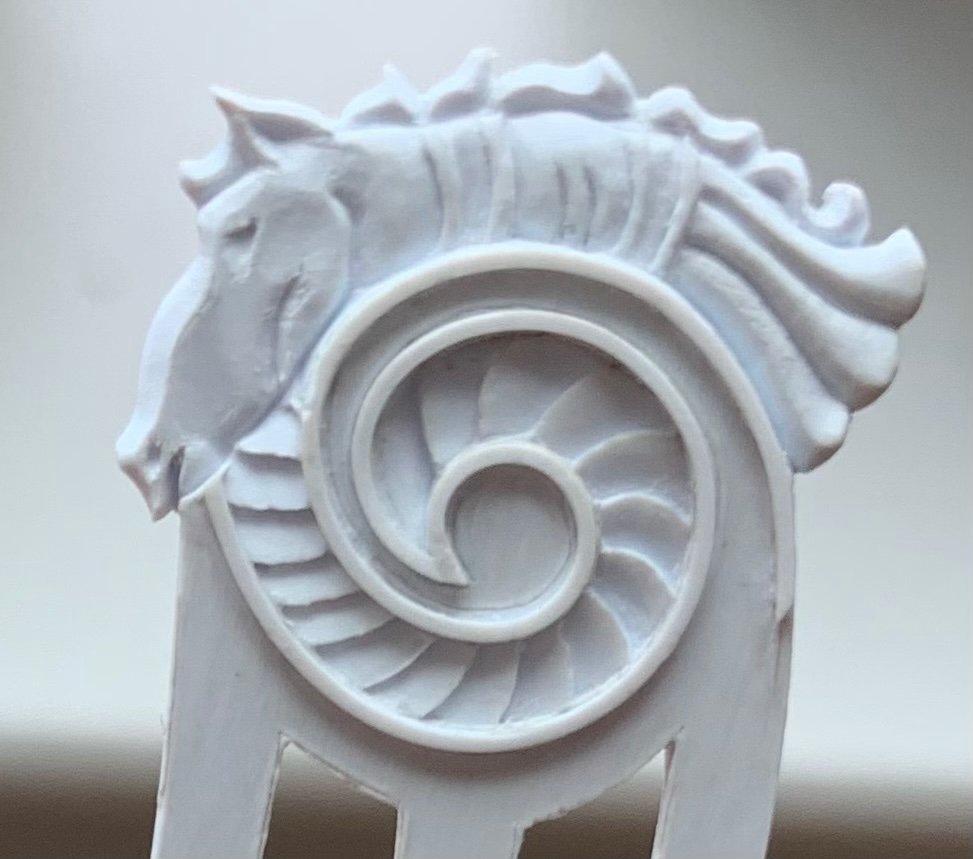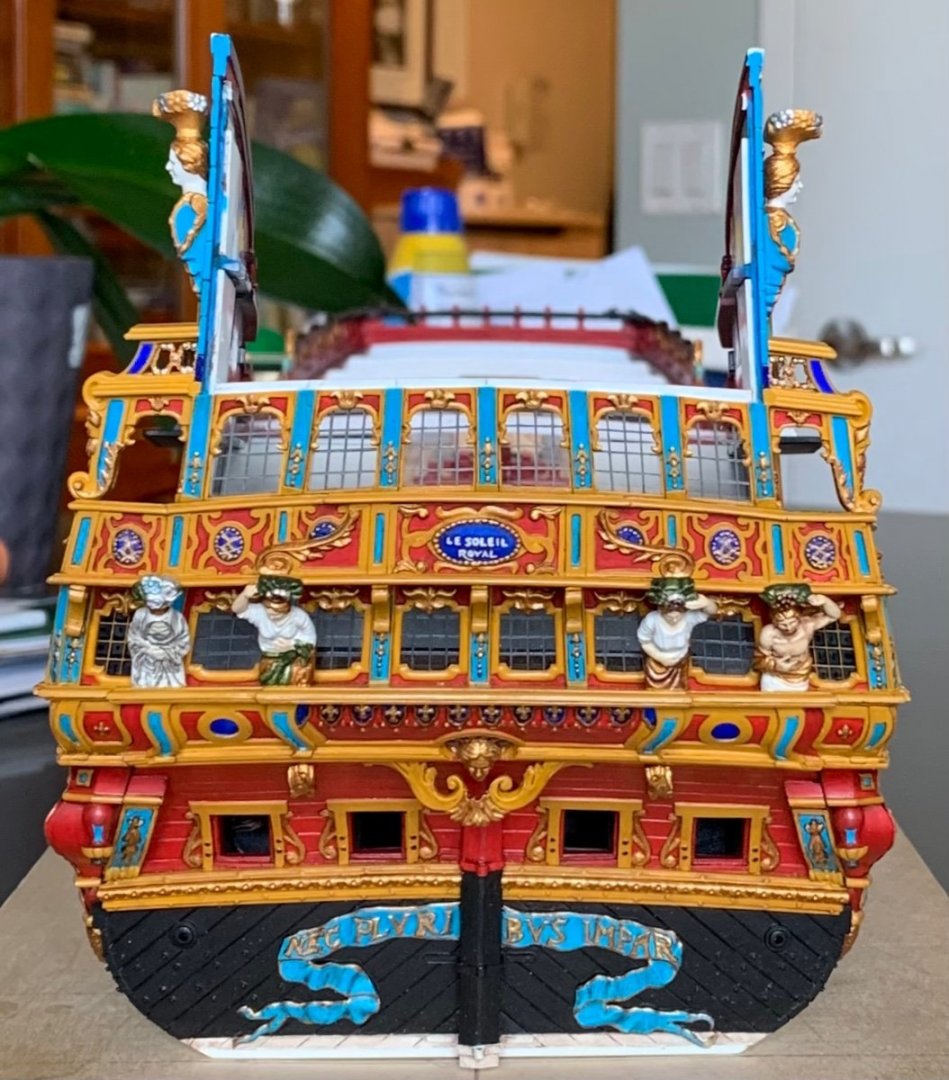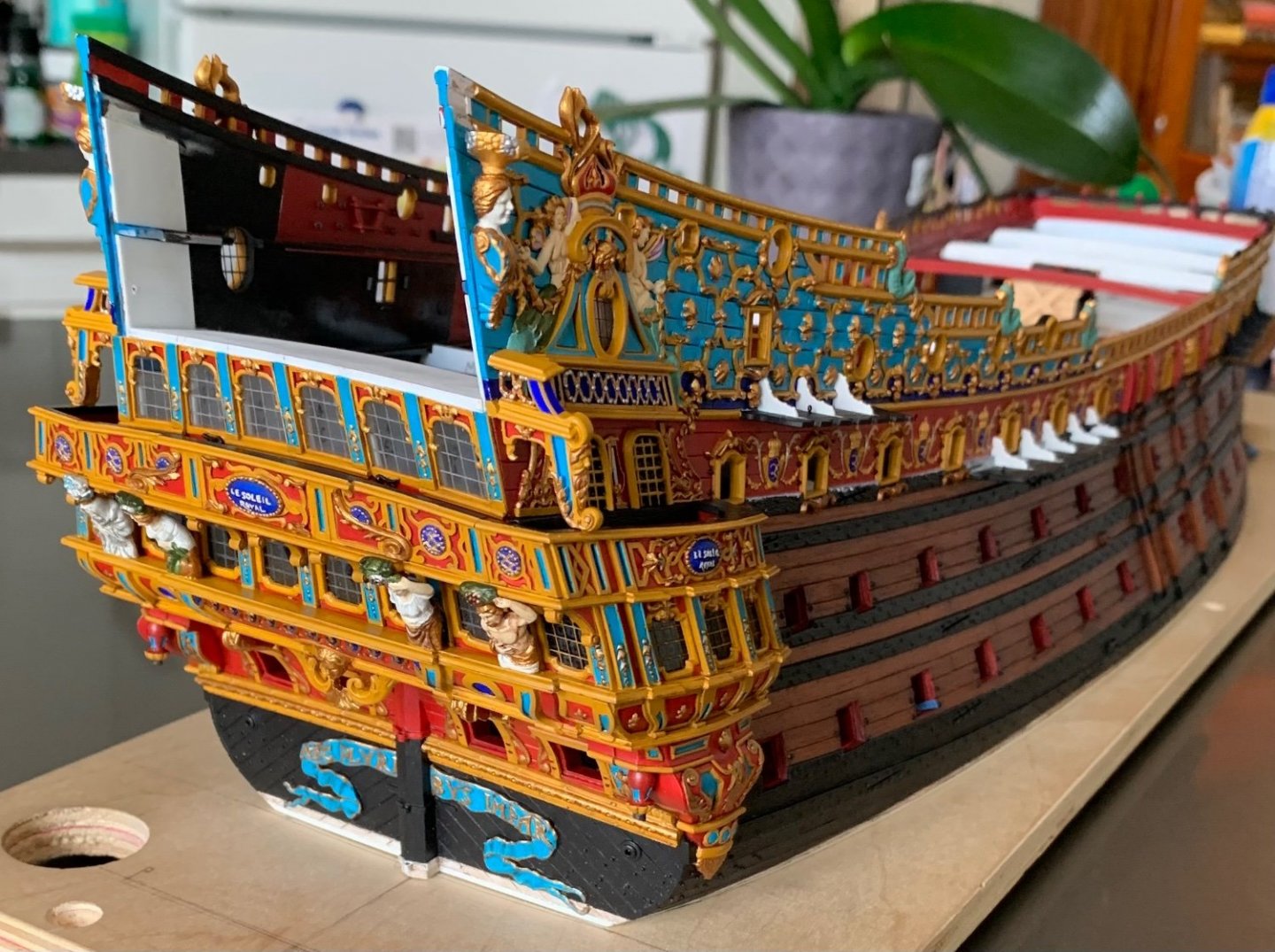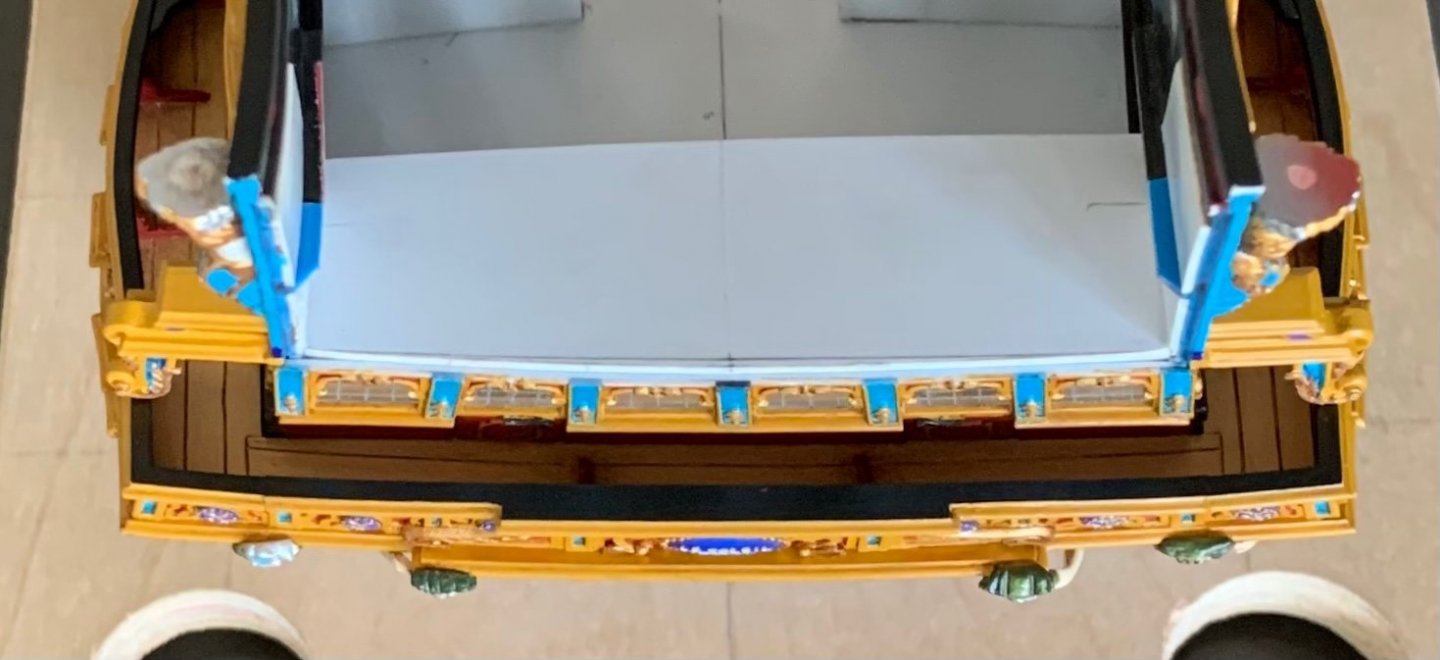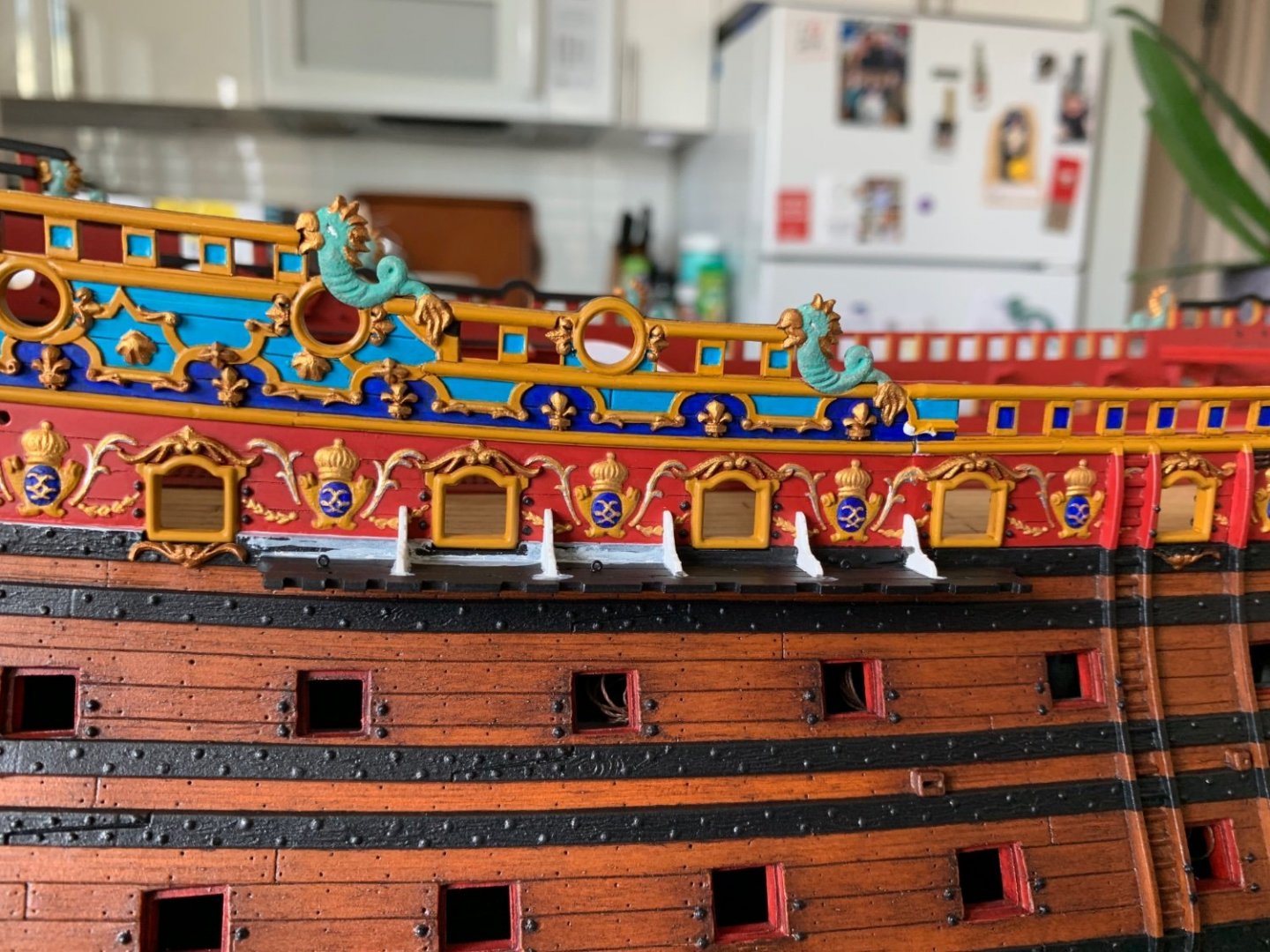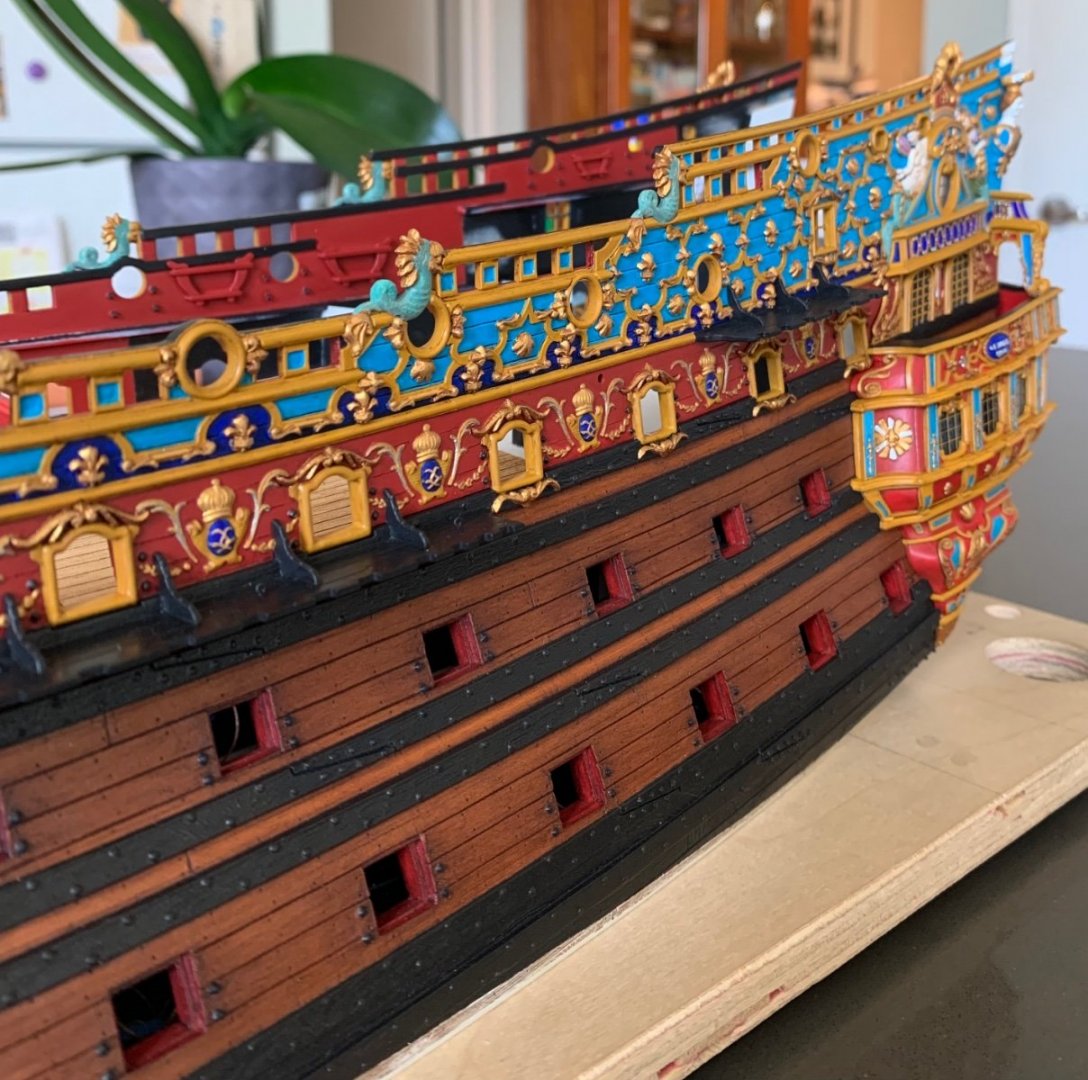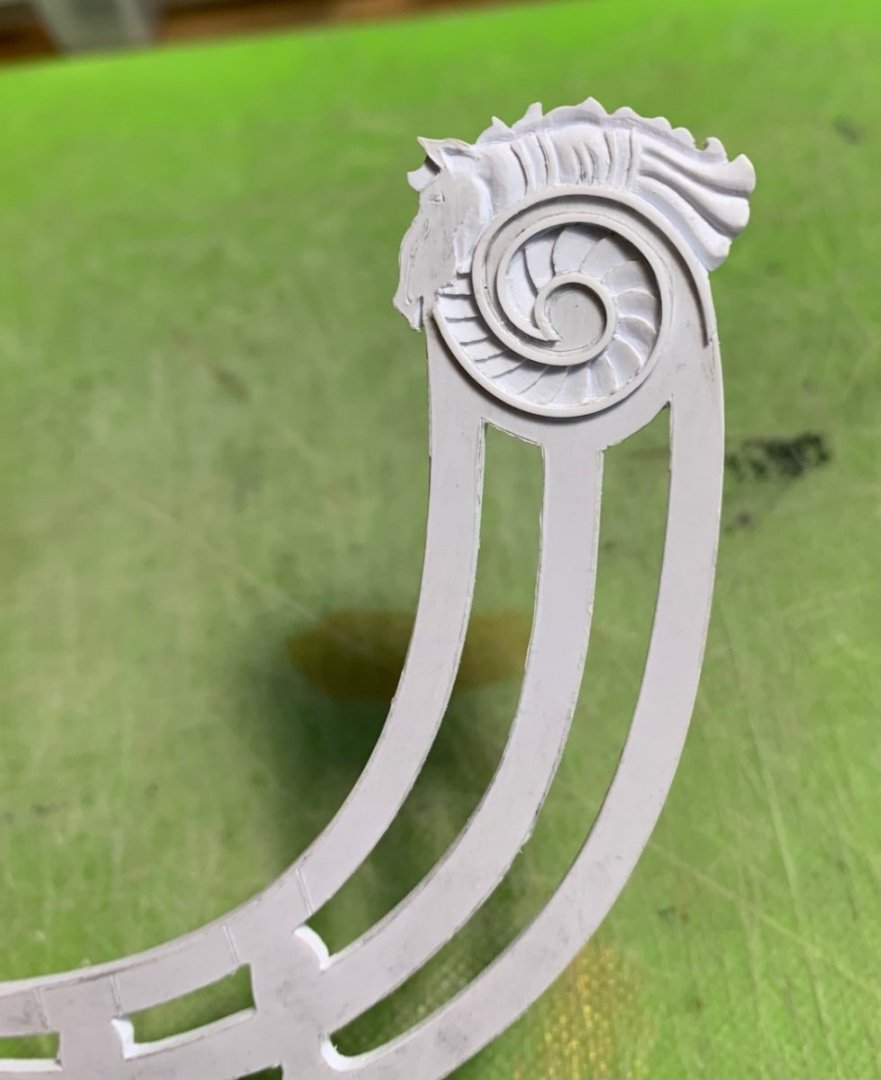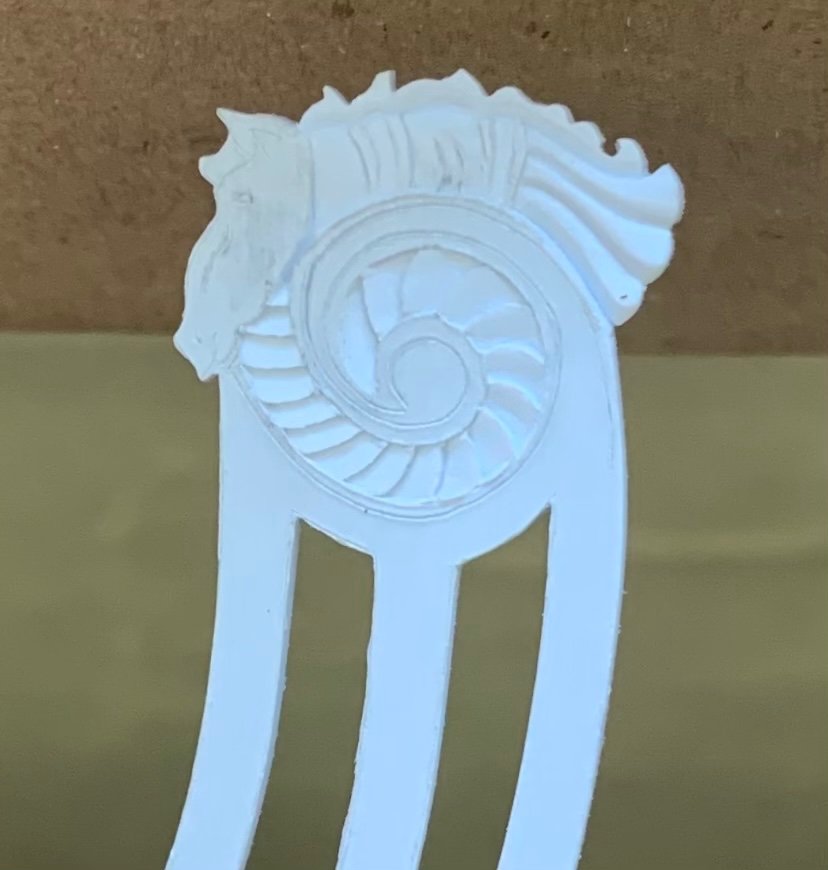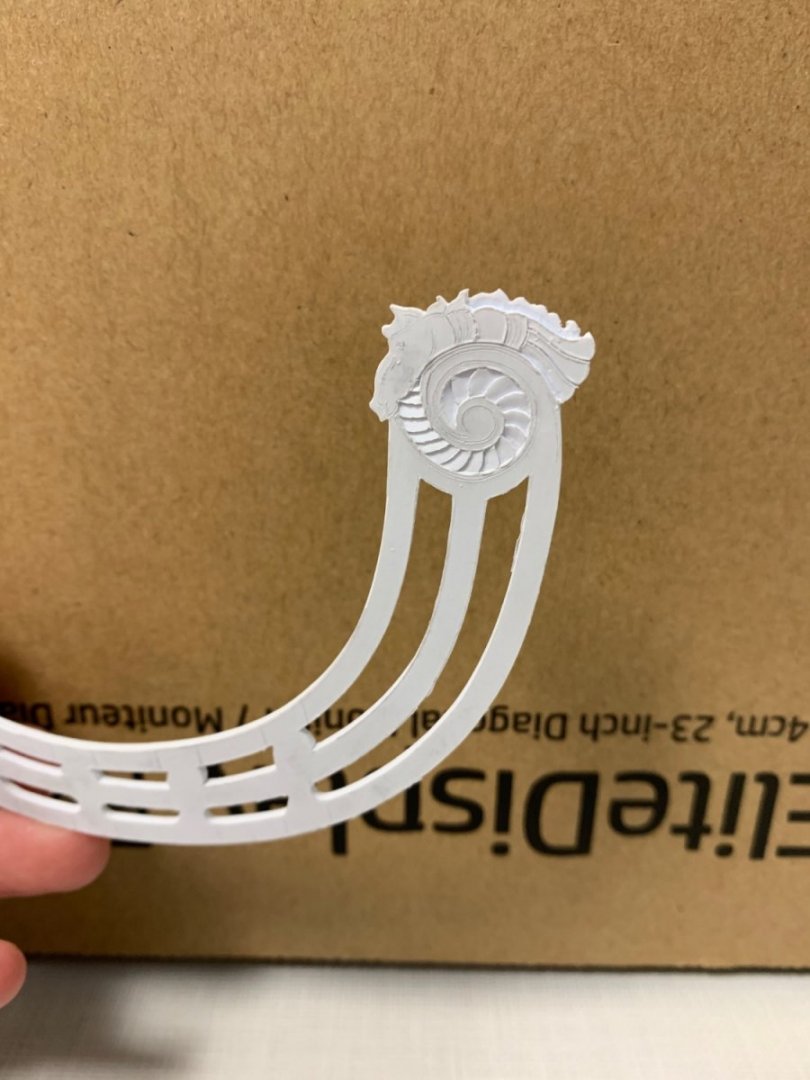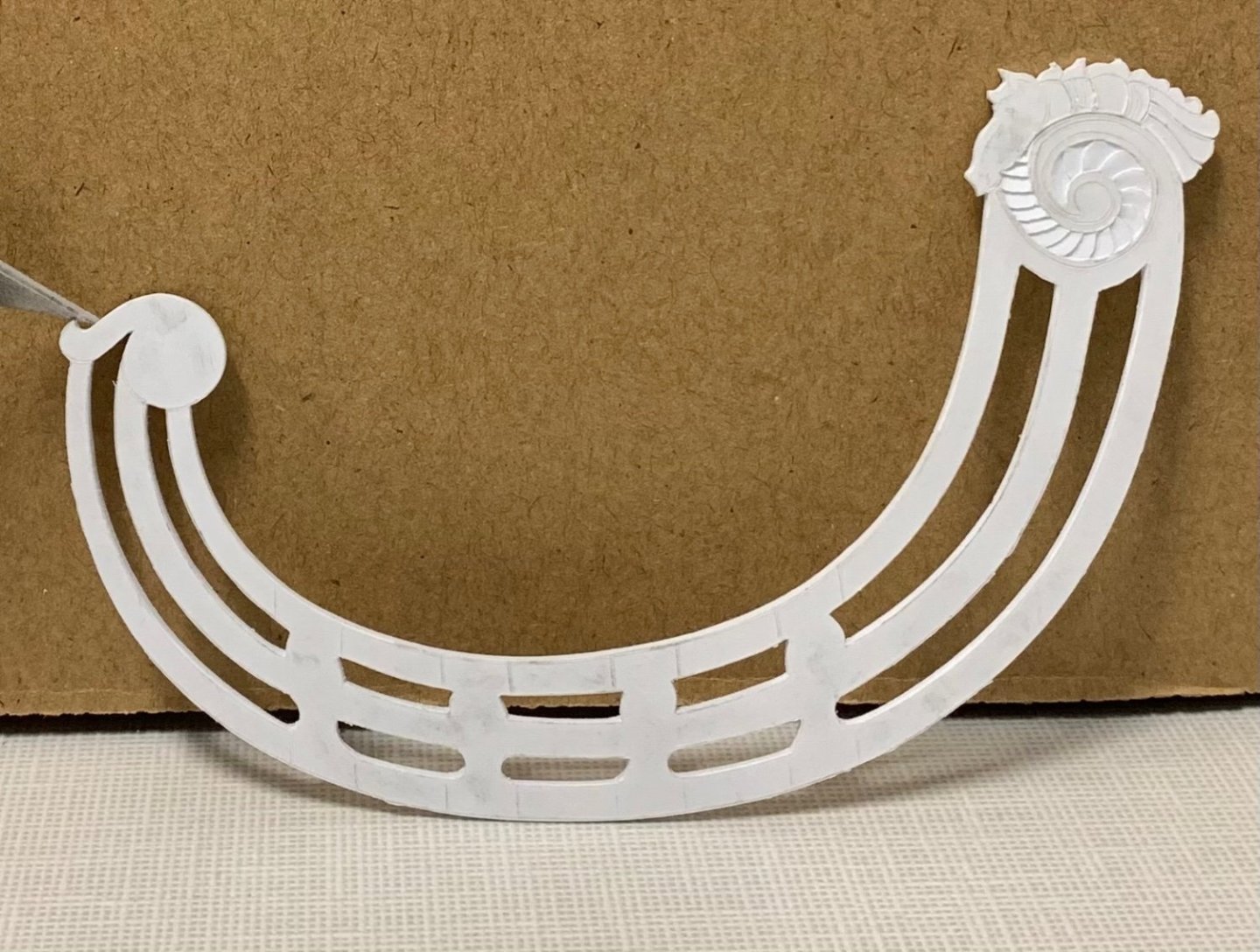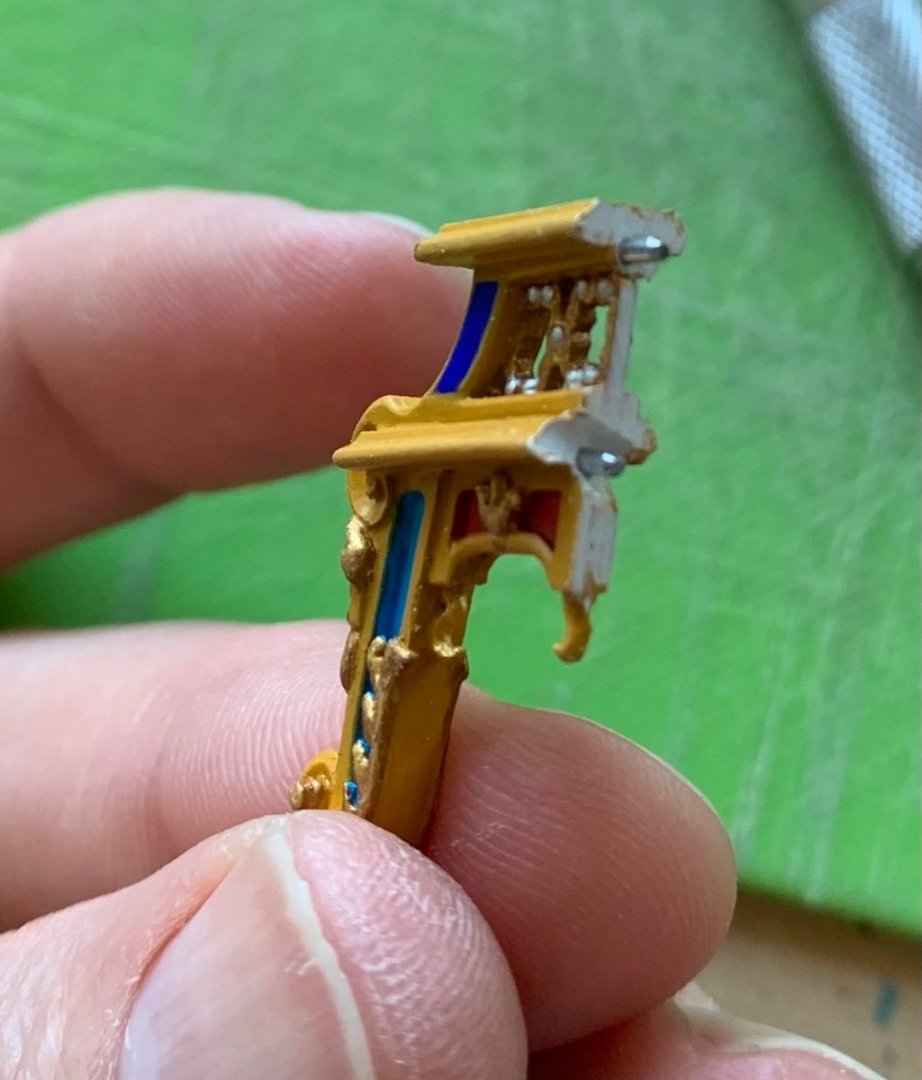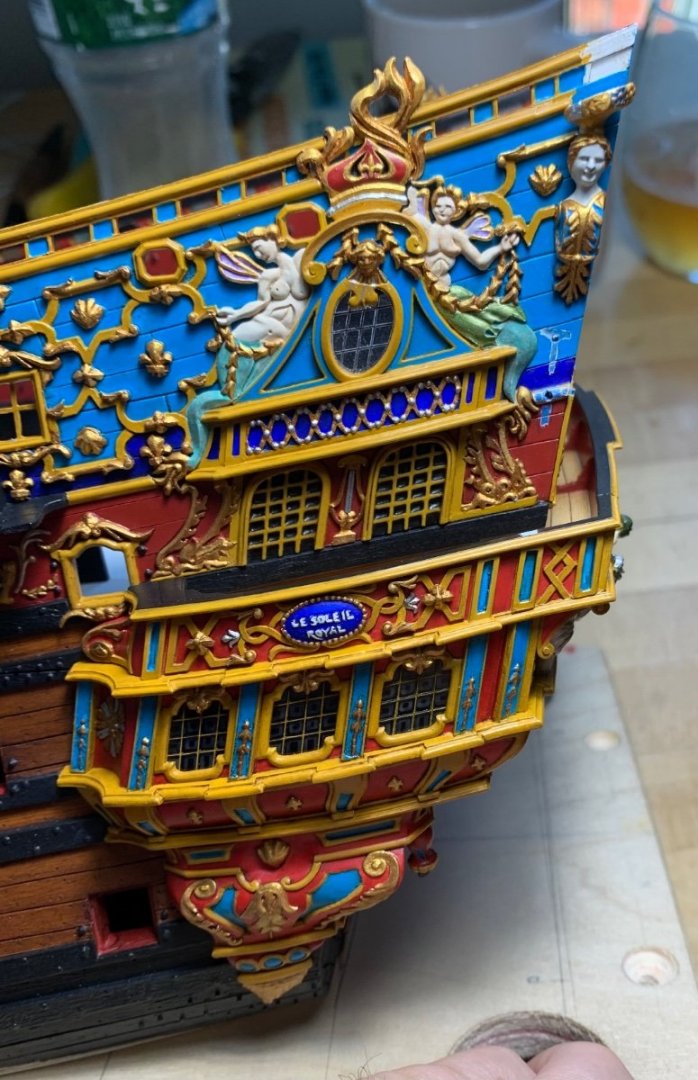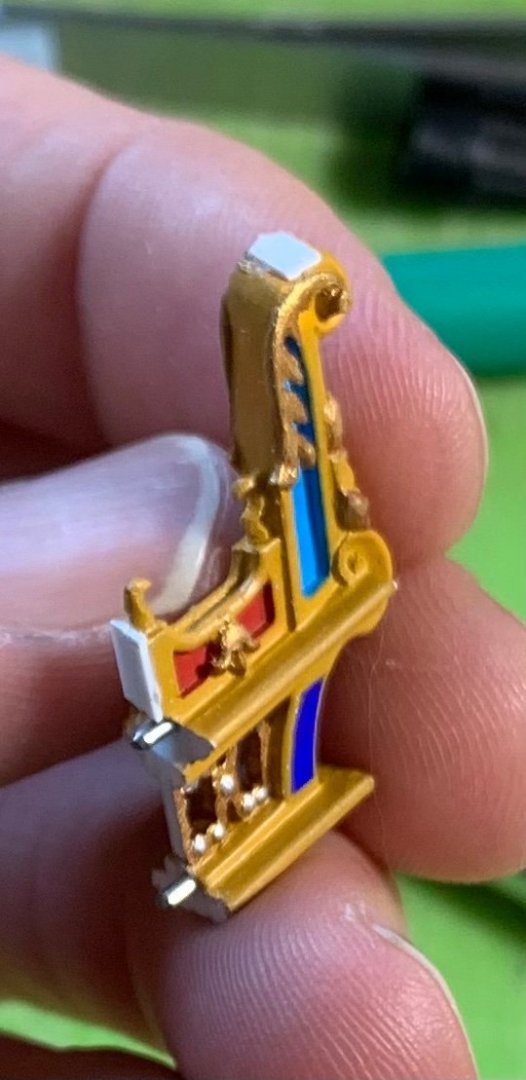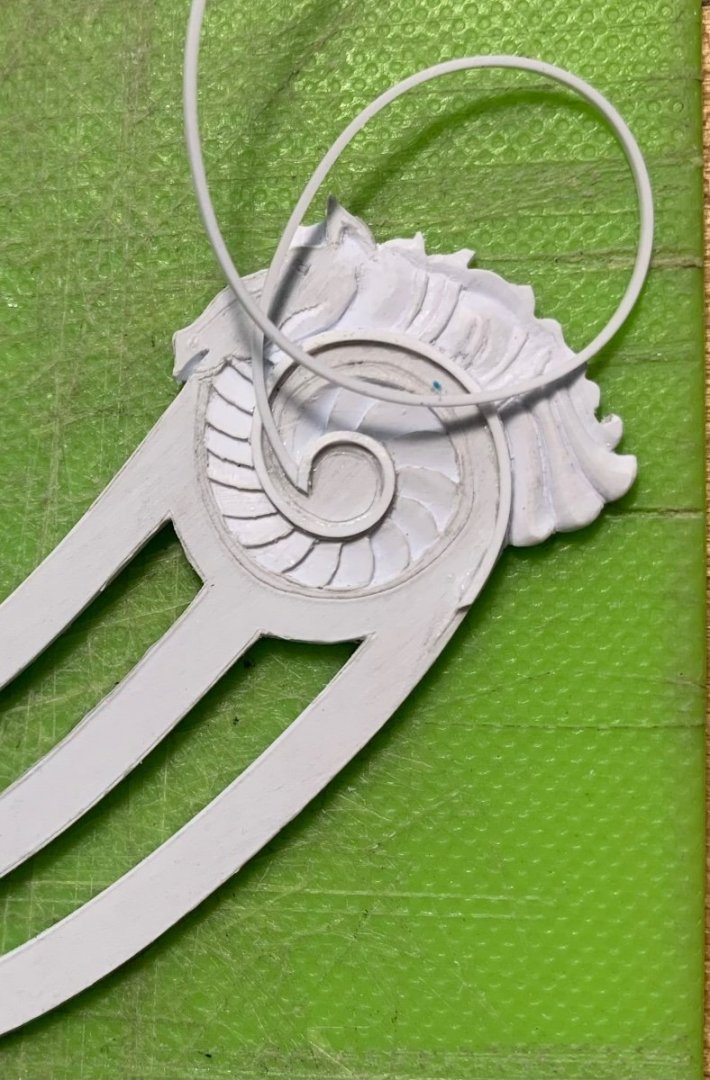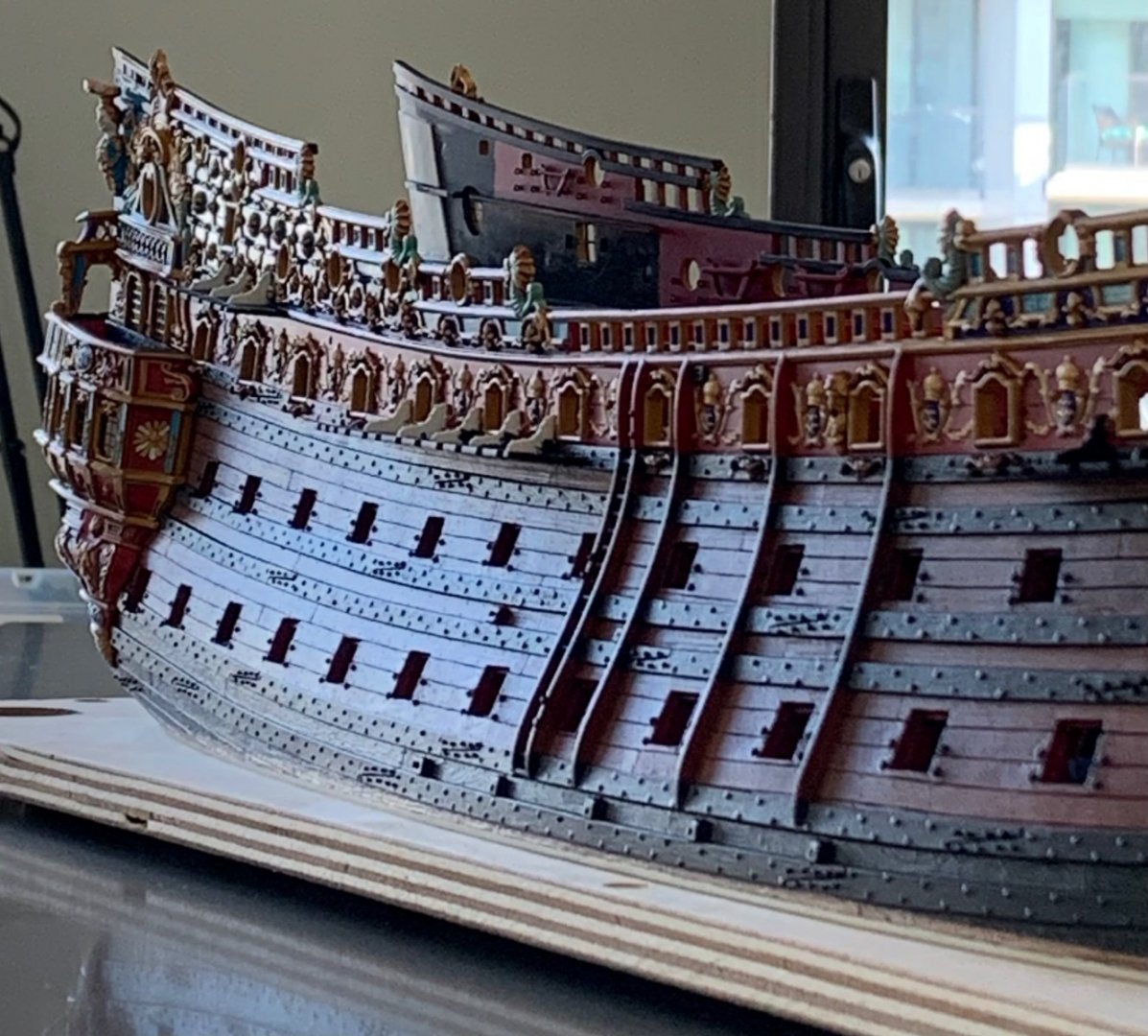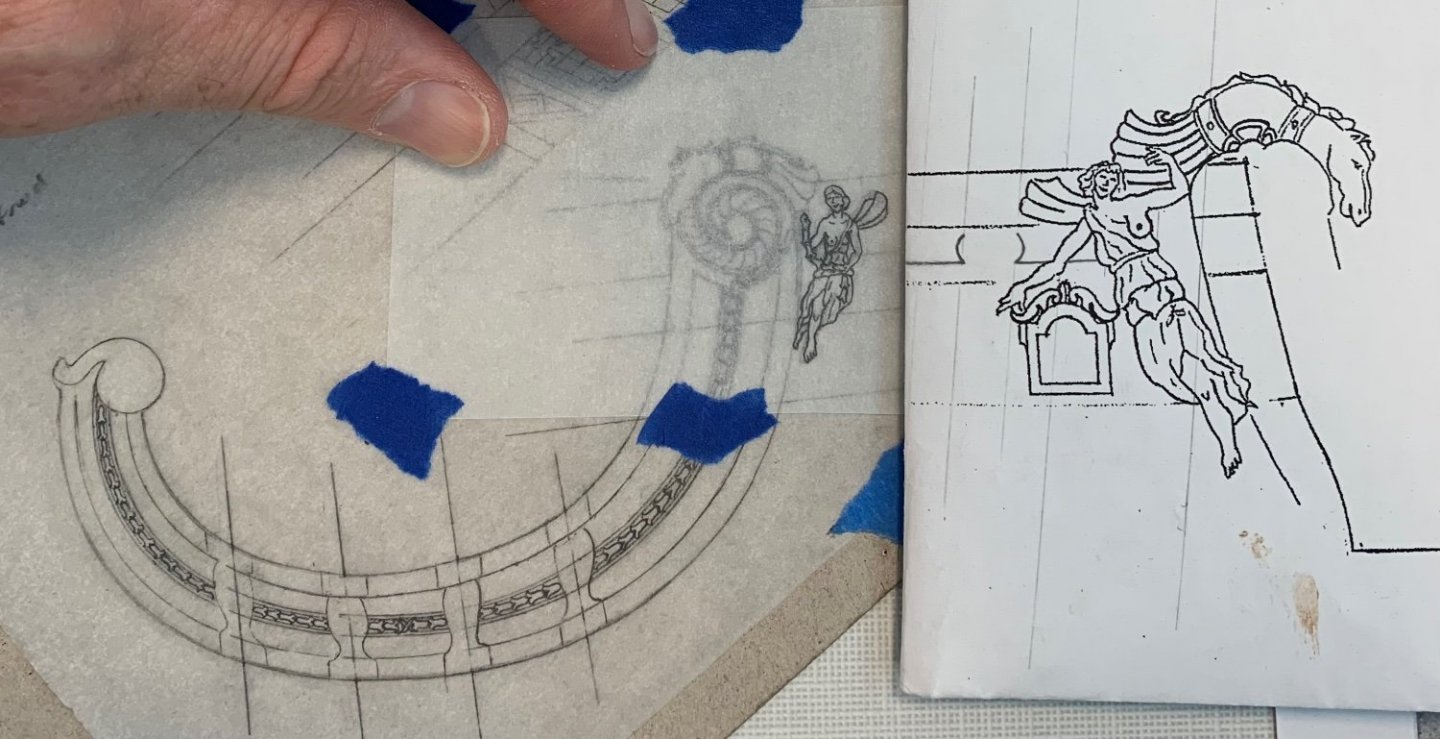-
Posts
2,937 -
Joined
-
Last visited
Content Type
Profiles
Forums
Gallery
Events
Everything posted by Hubac's Historian
-
Thank you, Druxey! I based the horseheads, somewhat, on the Ford Mustang emblem, but who says I can’t tackle a little rhinoplasty?
- 2,432 replies
-
- heller
- soleil royal
-
(and 9 more)
Tagged with:
-
Thank you, Mark! There is no need to give up the hobby; angles are everything in photography, and that angle lies a little bit.
- 2,432 replies
-
- heller
- soleil royal
-
(and 9 more)
Tagged with:
-
Vic - you are a bonafide ship-modeling legend and a true artist. You are among the very few to have sailed their historic creations on open water, and the pure magic of all of that is an inspiration to everyone that sees them. I’ve seen the bare bones of what you have planned - it’s going to be amazing, no matter what way you get there, and particularly because you think outside the ol’ sea chest.
- 2,432 replies
-
- heller
- soleil royal
-
(and 9 more)
Tagged with:
-
As always Victor, I appreciate your continued interest in my log! I would especially like to highlight a new project that Vic has begun, because I think it presents a really interesting approach to the ever-vexing problem of what Soleil Royal may have been:
- 2,432 replies
-
- heller
- soleil royal
-
(and 9 more)
Tagged with:
-
In consideration of Thomas’s request, I’ve been photographing the headrails as I carve the horse ornament. The starting place was to carve the fanned relief in the inner scroll: From there, carving the horse is mostly about establishing levels within the carving. Here, I’ve determined that where the mane meets the horse’s back will be the lowest-depth cut of the carving, my baseline: After undercutting the mane a bit, which helps give dimension, later during the modeling of the mane, I decided to proceed from the tail to snout, as this Roman skirt was an easy thing to understand and model: It all proceeds smoothly enough, until the head, which presents some challenges. For the record, I have not done any involved study of horse anatomy. I am merely attempting to hint at the major muscle groups that animate the animal’s jaw and face. I wanted to experiment with my idea to add the bordering of the headrails. It was easy enough to induce a curl into this square styrene strip (.020) with my finger nail. I anchor the starting point with thin CA, and then I work my way around the scroll, 1/4” by 1/4”, with liquid styrene cement. It turned out about as well as I could have hoped. Today, I finished up with the modeling of the head and mane. I still need to add a few applied “buttons” to the two bands that wrap around the horse’s body, but this is a simple thing. It is not an anatomically perfect study, but there is shape and movement that will catch the light and create shadows when painted. In other news, I have installed the pass-through archways. Because boxwood carvings will sit upon these, I wanted to ensure that they were very securely affixed. After much fitting and strategic scraping of paint, I fit two pins (from a paper clip) into each bracket: The plan was to glue these in using CA in the sections where the pins are, and liquid styrene cement in-between and at the foot. I got the correct rake and alignment for the port side, on the first try. There were, however, a pair of gaps that needed filling for a secure welded bond: I added styrene pads to the foot and below the lower pin and then faired these to fit seamlessly. With these brackets in place, my conception of the way Berain’s stern relates to these quarter galleries can be clearly understood: As a side note: it was really challenging to get the foot of each bracket to align with the pilaster of the gallery bulwark beneath it. The starboard side is acceptable, but the port side (showing the merely acceptable side) came out perfectly: I also wanted the brackets to follow the round-up of the stern, so their in-board surfaces had to be beveled, accordingly: In natural light, this is a very accurate reflection of my colors. Presently, I continue to do all of the necessary touchups, distress washing (not applied to brackets yet, in these pictures), and blackening of the upper main wales and channels, on the starboard side. My least favorite aspect of this build is attempting to cut super-clean lines directly onto the model. The plywood base is a tremendous asset for these circumstances, but it is always awkward and difficult. Here, my line began to waver, after I had been at it for a few hours: The back and forth process of revision is on-going. The Heller kit has many flaws, but I do think it is fair to say that they get the aft sheer, pretty close to the mark: More to follow!
- 2,432 replies
-
- heller
- soleil royal
-
(and 9 more)
Tagged with:
-
Ditto to that, Kevin. Setbacks like these really sting, in the moment. You seem to be handling it all with admirable equanimity. If it were me - and it almost has been several times - my swearing would resurrect the ghost of George Carlin.
- 443 replies
-
- Cutty Sark
- Revell
-
(and 2 more)
Tagged with:
-
Your work is looking very good and clean! I think it is good to do as you are, which is to take whatever small mistakes there may be in-stride. Your next models will be better and better still. This one is shaping up beautifully.
- 84 replies
-
- Statenjacht
- Kolderstok
-
(and 1 more)
Tagged with:
-
I am 13 1/2 interminable years away from retirement. My personal life is just ripping by, but work feels like time has just stopped.
-
Mark, I am enjoying your sense of milestone achievement because I know that feeing when you finally get past what you initially estimated to be a huge hurdle, and you stick the landing without any lean or falter. Congratulations, Man! This truly is an inspirational log and certainly one I will be referring to, down the road.
-
As always, Frank, beautiful and patient execution. Personally, I’d be inclined toward simple circle coils, but I’d make them off-model in a form, so that I could induce a drooping shape with dilute PVA.
- 510 replies
-
- reale de france
- corel
-
(and 1 more)
Tagged with:
-

Soleil Royal 1/72 - Artesania Latina Ref.22904
Hubac's Historian replied to modeller_masa's topic in Wood ship model kits
I am not permitted to specifically reference the builder or forum, however, one builder has undertaken a "re-engineering" of the "Artesania Latina Soleil Royal" that shows exactly what is possible with this kit. And let me tell you - it is surprising! Out of the box, on the other hand, there are nuuuuuuuumerous problems with this kit. It's chief benefit is the fact that the bulkheads, as drawn, are actually pretty faithful to a first-rate of the period. The ornamentation, particularly of the stern, is very good - far better than anything yet produced (apart from Heller, which copies Tanneron directly). Overall, the kit more closely resembles Michel Saunier's model of SR. I am a proponent - and since I know they are paying attention to this forum, at least - of AL doing a re-design of their own release. IT COULD BE SO MUCH BETTER. It should be so much better. Do it better, AL! People pay a lot of money for these kits. -
I don’t mean to be a thorn on your vacation, Bill. I just think you might have second thoughts, once all the yards were up on the model, if you were to proceed with these particular wooden blocks.
-
I think it is a matter of relative and proportional size. Attached to the mastheads, the blocks seem less girthy. The yards are relatively narrow, though. I think, if you reduced these blocks to the next size down they would look right. Or, maybe try the printed blocks. If they are the ones that Kevin made, they will be proportional, overall.
-
Hi Bill, before you get too far into it, I would like to gently encourage you to re-consider the scale of your yard blocks. They appear considerably too heavy for their respective applications.
-
Hello Thomas, Of all these kinds of reliefs I’ve made for the model, I did a pretty thorough review of my relief process for the amortisement mermaids. Beginning with the post cited above (post#1218, page 41) I go through the entire process, and discuss the particular tools that I use to get there. The beauty of styrene, as opposed to wood, is that you really don’t need many knives to get really good results. You will see each of these discussed in the subsequent posts, but I essentially use two Exacto blades - one more accute than the other - a hooked chip-carving knife, a short and shallow sweep gouge, and a fine veiner. That’s basically it.
- 2,432 replies
-
- heller
- soleil royal
-
(and 9 more)
Tagged with:
-
I took measurements off of the model, and transferred them to my drawing, which I had sprayed with hairspray to fix the graphite before proceeding with the pixie figure. I expected to be erasing a lot, and I was correct! Unfortunately, the hairspray altered the “tooth” of the paper, and I just could not draw clean lines, so I taped an overlay for the pixie. This was helpful, in revising my earlier attempt because I could re-plot elements I wanted to maintain, while making spatial assessments of what needed to be changed. It took a while to get the proportions of her limbs where I wanted them. You can see, in comparison with the drawing I made at the start of this project, how scaled-down the horse and pixie now are: I am satisfied with all of this, so tonight I will paste a photocopy to a blank of 1/16” styrene sheet, and I will begin making the port headrails. The horse figure will be integral to the headrails, while the pixie will be a separate part. I expect each headrail side to take a couple of weeks to make, but this is an enjoyable and portable side-project. As always, thank you for the likes and for looking-in. More to follow!
- 2,432 replies
-
- heller
- soleil royal
-
(and 9 more)
Tagged with:
About us
Modelshipworld - Advancing Ship Modeling through Research
SSL Secured
Your security is important for us so this Website is SSL-Secured
NRG Mailing Address
Nautical Research Guild
237 South Lincoln Street
Westmont IL, 60559-1917
Model Ship World ® and the MSW logo are Registered Trademarks, and belong to the Nautical Research Guild (United States Patent and Trademark Office: No. 6,929,264 & No. 6,929,274, registered Dec. 20, 2022)
Helpful Links
About the NRG
If you enjoy building ship models that are historically accurate as well as beautiful, then The Nautical Research Guild (NRG) is just right for you.
The Guild is a non-profit educational organization whose mission is to “Advance Ship Modeling Through Research”. We provide support to our members in their efforts to raise the quality of their model ships.
The Nautical Research Guild has published our world-renowned quarterly magazine, The Nautical Research Journal, since 1955. The pages of the Journal are full of articles by accomplished ship modelers who show you how they create those exquisite details on their models, and by maritime historians who show you the correct details to build. The Journal is available in both print and digital editions. Go to the NRG web site (www.thenrg.org) to download a complimentary digital copy of the Journal. The NRG also publishes plan sets, books and compilations of back issues of the Journal and the former Ships in Scale and Model Ship Builder magazines.



